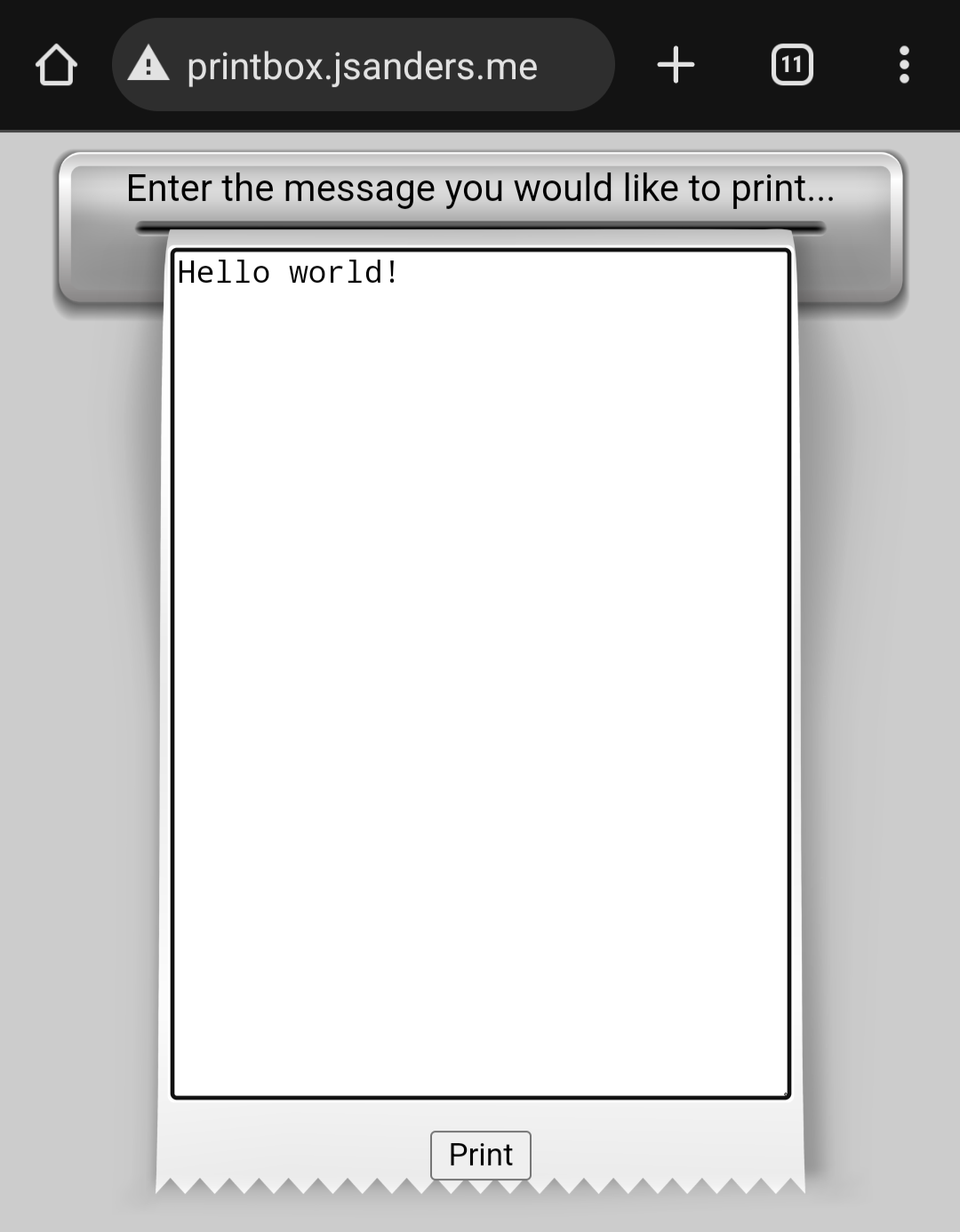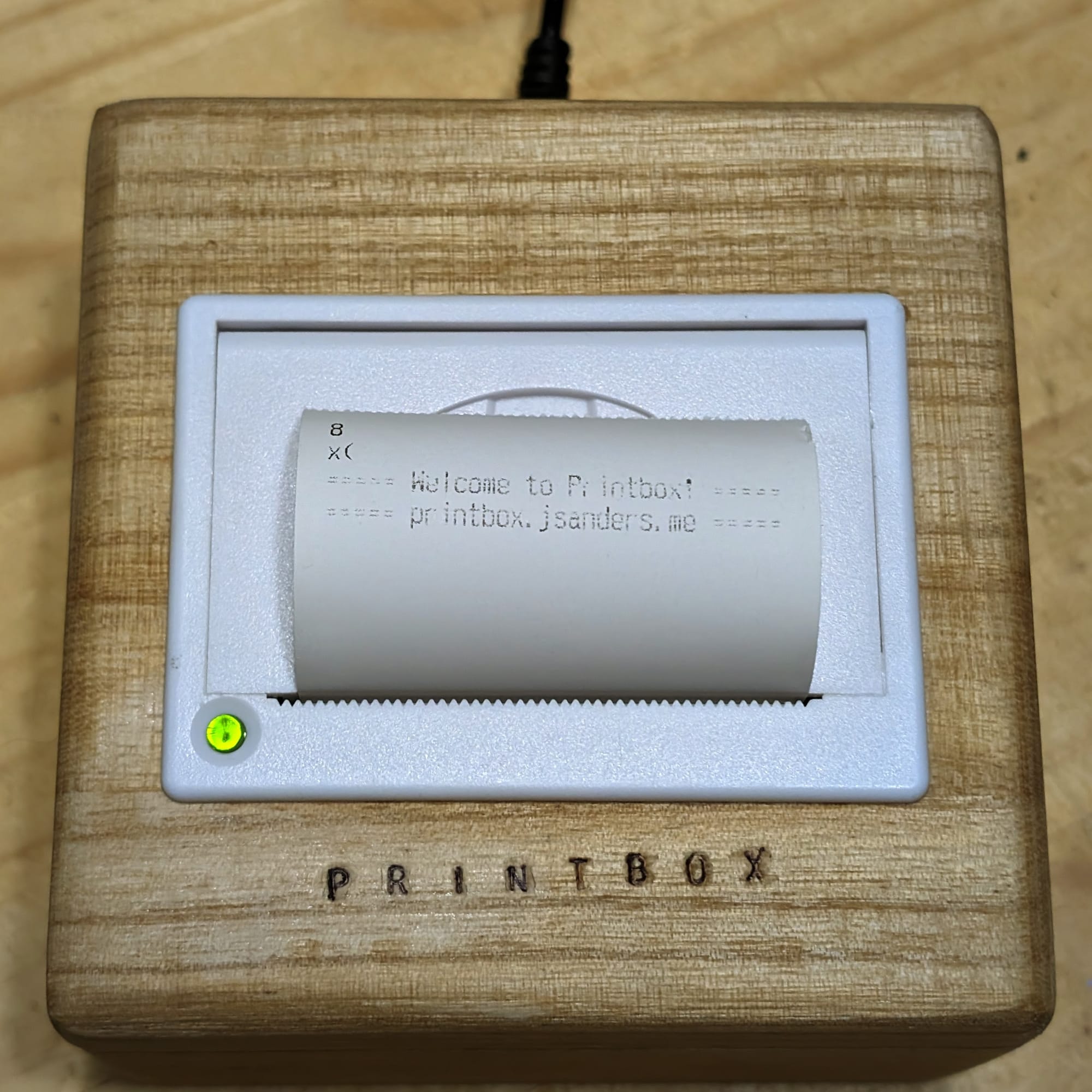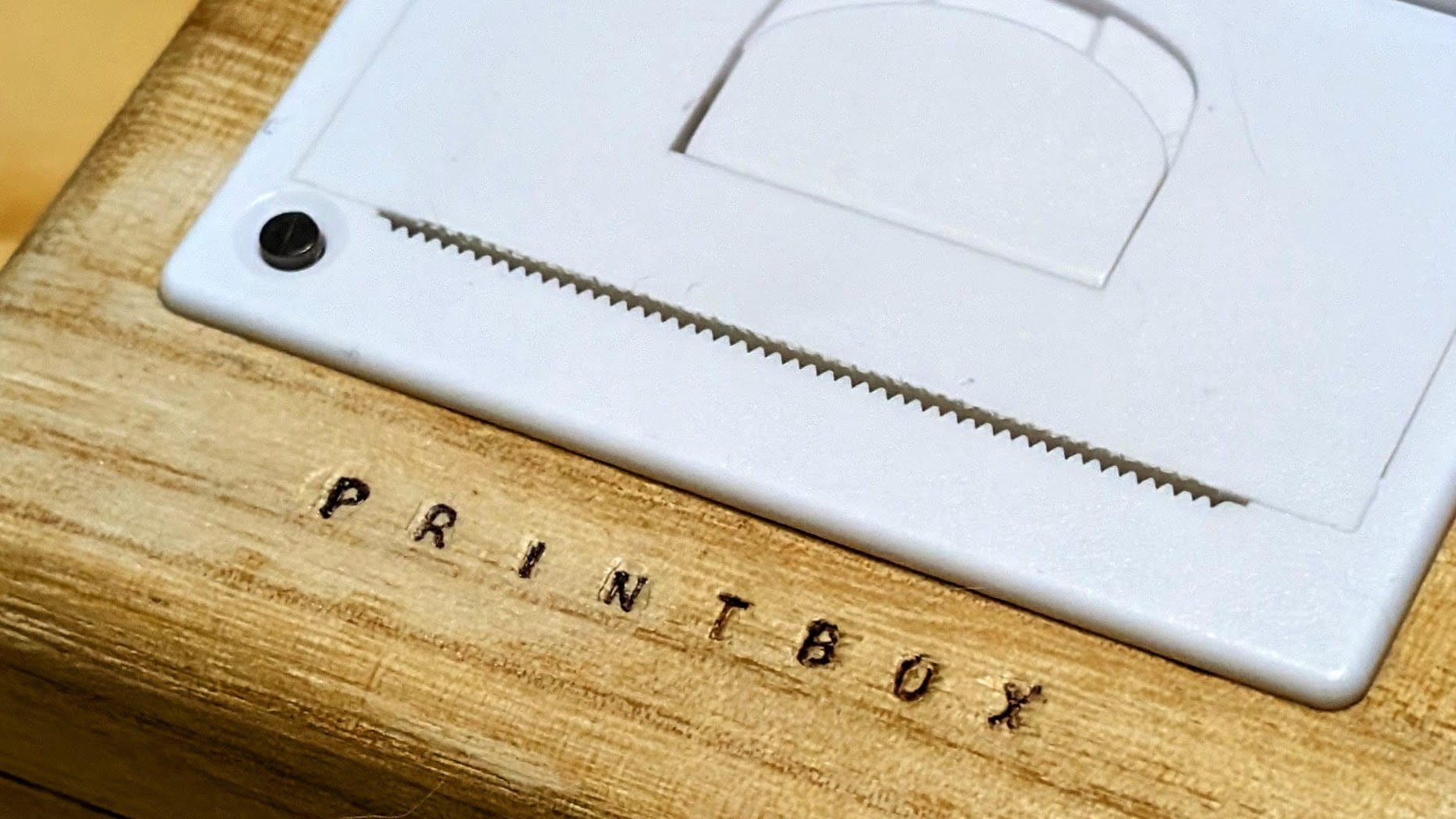Printers have long been an interest in my technological periphery. They're somehow ubiquitous in our modern life yet most view them as enigma or, worse, a force of evil.
For me, printers fit somewhere in the middle of that spectrum. They're not bad, they're just misunderstood. So when I stumbled across this embeddable thermal printer, I thought it would be neat to explore how a computer interacts with a printer by creating a tiny network-connected device that could accept a request and spit out a physical response.
After some tinkering, PrintBox was born. Say hello, little guy.

Ok, but what exactly is PrintBox? At its heart beats a Raspberry Pi Pico, some MicroPython code, various power controls, and – of course – a thermal printing module. It accepts a 5v barrel connector for power and features a handy on/off switch on the back of the box. The box is hinged and has a set of small magnets to keep things closed up when in use. Here's a peek inside:

On the left is a small protoboard; the top half receives data output from the Pico's GPIO pins and passes it over to the printing unit, while the bottom half routes power from the barrel jack into both the Pico and thermal printer. The Pico rests on the right, while the thermal printer itself is flush-mounted into a hole on the lid, using the retaining brackets that come with the unit.
To actually make PrintBox obey your printing commands, simply point a web browser to the Pico's web server. You'll be met with a static page on which you can (roughly) template how you want the final print to look.

At this stage, I added a DNS record to my local nameserver to make it easier to remember the address, and added a short printout at boot which reminds users where to go to start their printing journey.

There are still some bugs at time of writing; PrintBox's Pico tends to hibernate and not want to wake up after an extended (24 hours or more) sleep - easily fixed with a flick of the power switch on the back of the unit. The thermal print head is also a bit temperamental and will sometimes decide to make certain lines or even specific characters lighter than others; you can see some examples of this in the photos on this page. Overall, though, I consider this project a success in that it achieves what it was made to do: print.
Is PrintBox going to revolutionize the printing industry? Not at all. Is it fun to print out an ASCII Tux the size of a ticket stub? Absolutely.

This site may contain links to affiliate websites, and we receive an affiliate commission for any purchases made by you on the affiliate website using such links.

